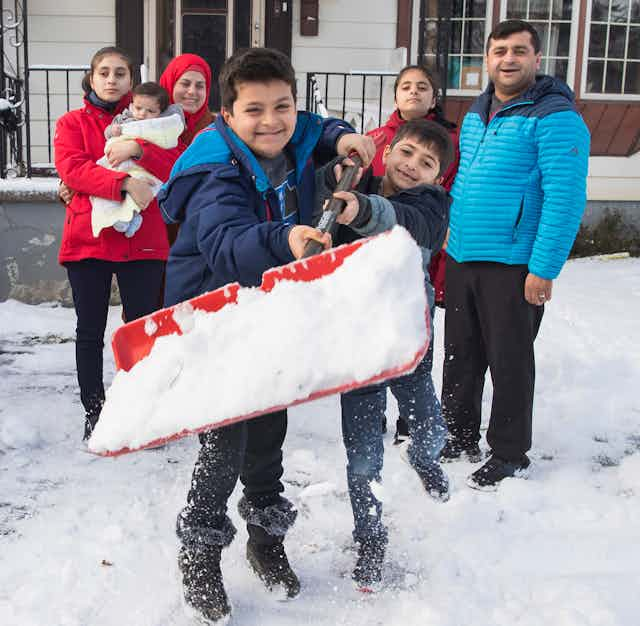The government of Canada has committed to bringing 40,000 Afghan refugees to Canada. To date, almost 6,500 have arrived since August 2021.
With the arrival of such a large cohort of refugees, there’s been more attention paid to the services that exist for them in communities across the country.
This of course is not the first time Canada has welcomed a large number of refugees. Between 2015 and 2018, for example, 58,650 Syrian refugees were resettled across the country.

Similar to the situation with Syrian refugees, Canada is anticipating more young refugees in the coming months. According to Immigration, Refugees and Citizenship Canada (IRCC), more than half of all refugees who arrive in Canada are under the age of 18. These young people are a unique part of the newcomer population, and understanding their needs can help communities become more effective in supporting them.
How to support children and youth
Young refugees from Syria sparked my research in this area. Through my PhD research at Dalhousie University, I wanted to better understand how Canada was prepared to receive and support refugee children and youth coming from countries devastated by war and armed conflict.
I focused on Halifax, N.S., as a case study to show how smaller urban centres supported the integration of young refugees.

I compiled a complete list of organizations that participated in helping to settle young refugees. I developed it by looking at the different types of needs they’d have (for example, physical, mental, emotional or spiritual needs, and those involving social connections in the community, as well as their education).
The application of resilience theory in this research was very important. Resilience theory argues that resilience doesn’t just describe a personality trait. It’s a combination of personal and social resources that interact to have a positive impact on someone’s well-being.
The notion that resilience is a quality someone possesses — rather than something facilitated by families, schools, communities and governments — oversimplifies the challenges of young people who have faced serious adversity. So we can think about services available to young refugees as resilience “resources,” located in different parts of the young person’s environment, and how those resources can be strengthened to better support their well-being.
This is where there’s potential for service providers. The services provided to young refugees contribute to the resilience resources in their environments, affecting their well-being. That means the ability of service providers to offer support to young refugees helps them engage with those resources, which in turn builds resilience.
Policy-makers and services providers should therefore regard resettlement and integration support as a way to make resilience resources available to young refugees that could ultimately ensure positive outcomes.

Working together
In my book Finding Safe Harbour, to be published on Feb. 15, 2022, I present some important findings from my research on how communities in Canada should work together to support the long-term integration of young refugees.
Effective integration requires support for newcomers, and specifically refugees, to exist not just via settlement service organizations but across public services and sectors throughout communities.
When my research was completed, I worked with a group of young people who had come to Halifax as refugees to run a public youth forum. Halifax residents were invited to come and learn about what these young refugees had experienced, both when they left their birthplaces and when they settled in the city.
The young people who helped run the event spoke about how the opportunity to be heard had made a huge impact on them and made them feel like valuable members of the community.

This is an important reminder of the importance of meaningfully engaging with young refugees in the development of policy, the creation of services and the delivery of those services. Their voices and input are integral to how communities respond to them and support them.
Halifax and many other cities across the country have the capacity to provide better integration support for young refugees as they arrive in Canada. With Canadian cities of all sizes becoming more diverse, local institutions need to actively promote integration and prevent the exclusion of newcomers.
With more cultural awareness and intentional collaboration, the community at large can be an effective resource for bolstering the resilience of these young people.

